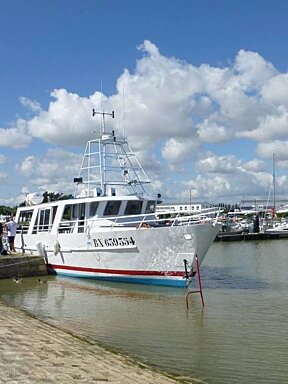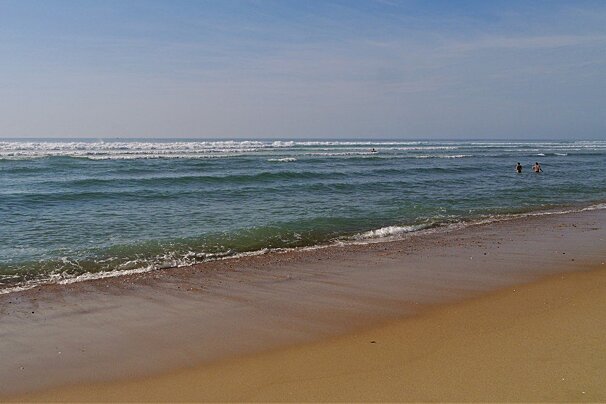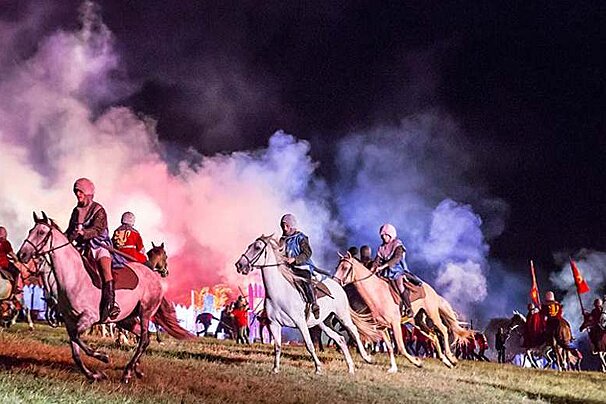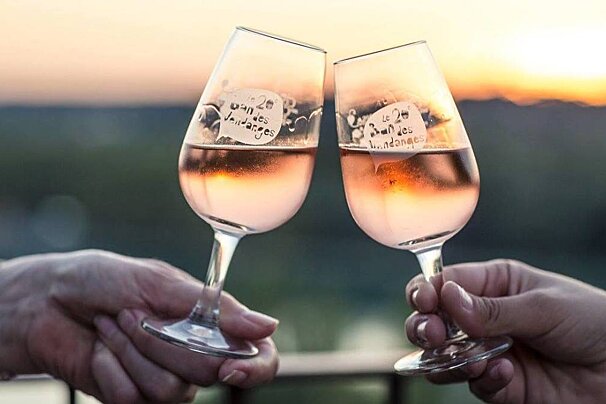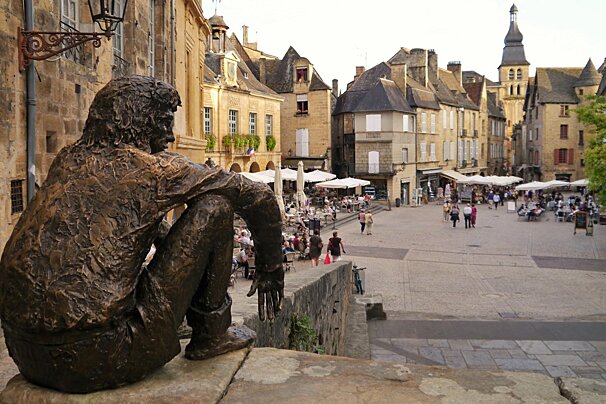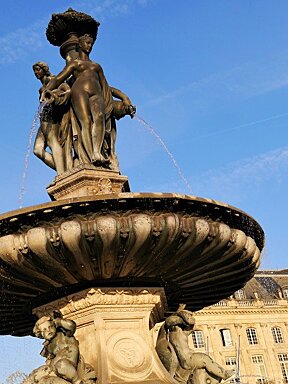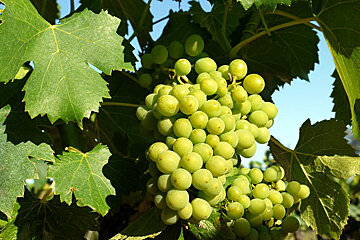
© Robin Deering
Grapes
Perhaps the most famous & notable of all produce in Bordeaux
The Bordeaux wine region lies along the rivers Dordogne and Garonne and covers an area of over 120,000 hectares.
This region has been producing wine for centuries as it's environment and soils are perfectly suited to the growing of grapes. The geological foundation of the region is limestone, leading to a soil structure that is heavy in calcium. The Gironde estuary dominates the region along with its tributaries, the Garonne and the Dordogne rivers, and together they provide adequate irrigation for the land.
The red wines of Bordeaux are usually blends of two or more of five grapes: Cabernet Sauvignon, Merlot, Cabernet Franc, Malbec and Petit Verdot.
In Bordeaux the concept of terroir plays a pivotal role in wine production with the top estates aiming to make terroir driven wines that reflect the place they are from, often from grapes collected from a single vineyard. The region's best vineyards are located on the well-drained gravel soils that are frequently found near the Gironde river.
As a generalisation, Cabernet Sauvignon (Bordeaux's second-most planted grape variety) dominates the blend in red wines produced in the Médoc area. Typical top-quality Châteaux blends are 70% Cabernet Sauvignon, 15% Cabernet Franc and 15% Merlot. Commonly known as the "Bordeaux Blend."
Although white Bordeaux wines are not as commonly well known the are just as prestigious, such as in the case of the exclusive and sweet Sauternes. This wine is made from Sémillon, Sauvignon blanc and Muscadelle grapes. Typical blends are usually 80% Sémillon and 20% Sauvignon blanc.
It is one of the world’s finest wine producing regions, and is where wines such as the rare (and expensive) Petrus are made. Over 85% of the wine produced here is red wine. Bordeaux is also home to the wonderful white dessert wine Sauternes. For more detail on the local wine production and vineyards please see our Wine Regions guide.

